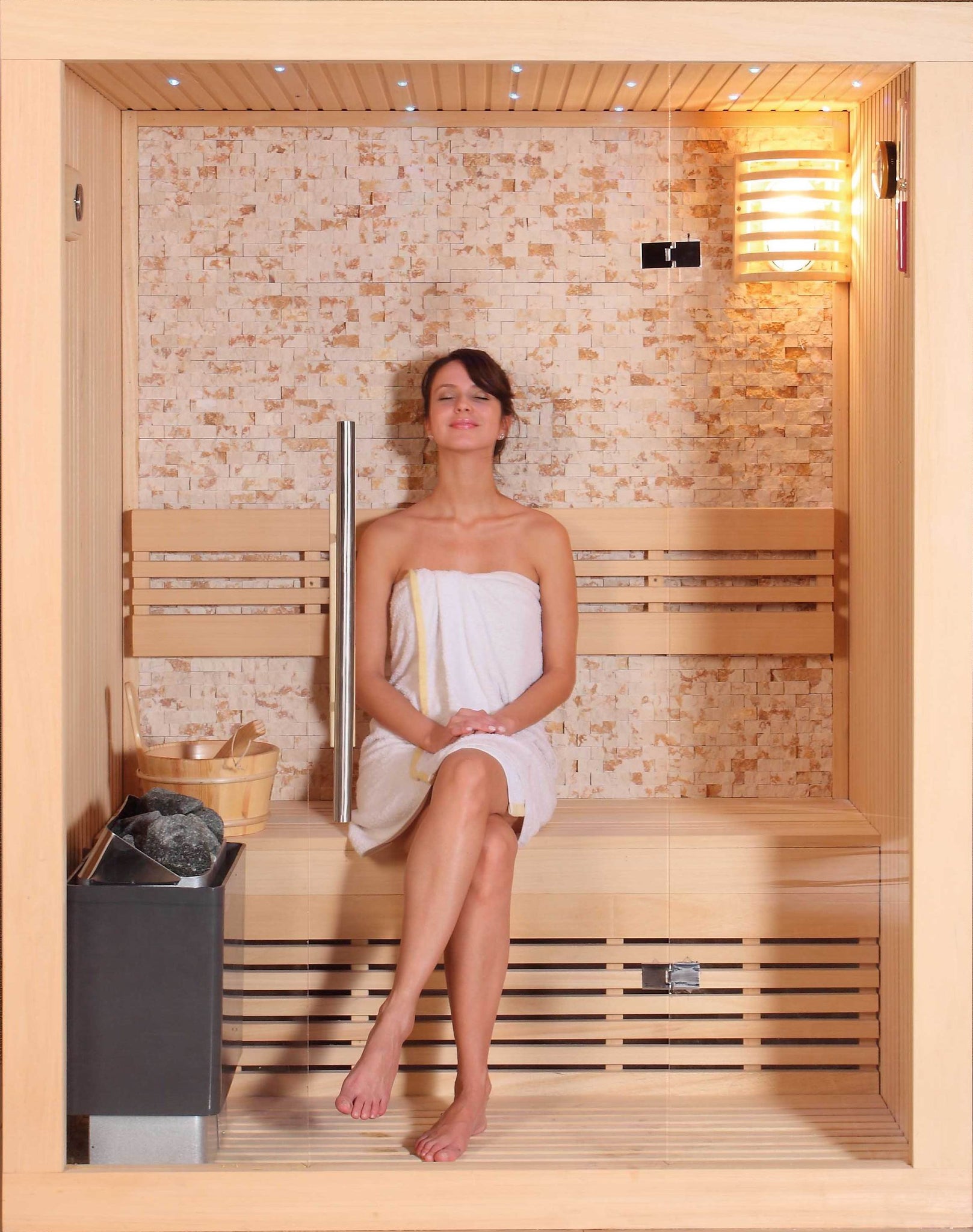The Single Strategy To Use For Traditional Sauna
The Single Strategy To Use For Traditional Sauna
Blog Article
Things about Traditional Sauna
Table of Contents4 Simple Techniques For Traditional SaunaTraditional Sauna Fundamentals ExplainedIndicators on Traditional Sauna You Should KnowThe 9-Minute Rule for Traditional SaunaUnknown Facts About Traditional Sauna
The majority of the weight lost in a sauna is water loss and is re-gained upon rehydrating. Nevertheless, undoubtedly sauna can be a crucial component of a healthy and balanced weight-loss program. To look at the differences between standard and IR saunas, I will certainly divide these into proven, academic, and made differences.Hence, the hottest factor in the saunawhich goes to the ceiling straight over the sauna heateris commonly between 185 and 190 F. Claims that a standard sauna surpasses 200 F is simply not true and not appropriate for electric saunas sold in the United States. The temperature for a far-infrared sauna is generally set in between 120 and 140 F; however, unlike the standard sauna, the objective in and IR area is not to attain a heat.

When a conventional sauna has actually been correctly heated up, the sauna walls are warm, the air temperature level has achieved established temperature and the rocks are incredibly warmed. As an intriguing side note, the warmed walls and the rocks are giving off far-infrared warm, integrated with the heated air, to develop an "covering warm".
Traditional Sauna Can Be Fun For Everyone
When the high temperature level is attained, the aspects cycle on and off to keep the high temperature. Many standard sauna users appreciate pouring water over the rocks to develop vapor to elevate sauna humidity levels. The advantages of pouring water over the rocks consist of: making the room much more comfortable, moistening the nasal passages, and allowing the use of aromatherapy by blending vital oils with the water.

When the energy enters the body, it triggers the body temperature level to raise and inevitably results in sweating. In an infrared sauna it is very important for the emitters/heaters to stay on almost frequently. Given that there is no mass of rocks to preserve warmth, the sauna will certainly cool if the emitters shut down.
Some Ideas on Traditional Sauna You Should Know
As stated above, the sauna bather in an infrared room intends to place himself before operating emitters to get maximum advantage from the heat. The home heating time for the two spaces can be really various, depending upon how the rooms are used. For a typical sauna, a bather should enable 30-40 mins for the room to achieve a preferred temperature level and to effectively pre-heat the rocks.

A well created sauna will normally attain a temperature of 150-160 F in concerning 30-40 minutes. For hotter temperatures, the room might need to heat for a longer period.
To some, 15 minutes was view "thrown away" while the infrared power warmed the timber panels instead of warming a body, while others locate a pre-heated area to be more comfy and believe a raised starting temperature is needed to start perspiring. The size of suggested use for each and every space is roughly the exact same (10-15 minutes per session); nevertheless, as a result of the lower air temperature levels and the capability to really feel the effects of infrared heat much faster than a conventional sauna, it is not unusual for a person to spend a total amount of 20-30 minutes in an infrared sauna.
The Ultimate Guide To Traditional Sauna

The typical cost per kWH of electrical power in the U.S. is roughly $0.11, so a 4.5 kW heater will certainly cost roughly $.50 to compete one hour, if the heating system runs continually for one hour. Generally a sauna heater will compete 75% of the very first hour and 50% of subsequent hours on given that the elements cycle once the established temperature is accomplished.
A two person far-infrared space is usually literally smaller sized than a conventional sauna, often concerning 4' x 4' or smaller. The IR heating system is generally 1.5-1.7 kW using a 120 volt 15 amp plug-in service. Considering that the room can be used quicker than a sauna space, we will certainly think the room is utilized for to of an hour including warm up time.
Finally, there is a rarely talked about difference in the social experience in between the 2 areas. While our society has shed some of the social benefit of the standard sauna experience, it can be really socially fulfilling YOURURL.com (Traditional Sauna). From household time in the sauna, to heart-felt discussions with better halves, to sauna partiesthe standard sauna experience can cause intimate mingling
Getting The Traditional Sauna To Work
Most greater end infrared spaces include colored light therapy, you can find out more noise systems and full-glass fronts.
Report this page